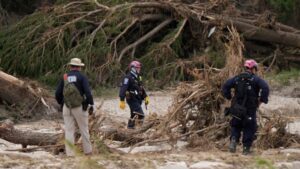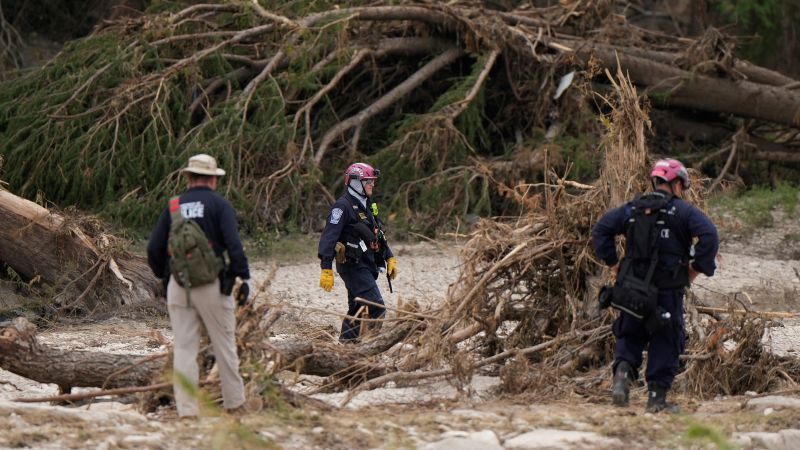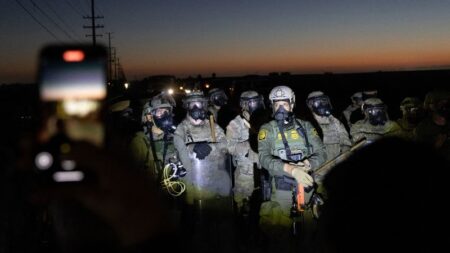The devastating floods that recently devastated central Texas have compelled a wide range of urban search and rescue teams from across the United States to come together in response. These teams, however, found themselves in a frustrating predicament. Reports indicate that despite their readiness to assist, they were not deployed by the Federal Emergency Management Agency (FEMA) until Monday evening — several days after the initial disaster had struck and tragically, days after any victims had been found alive. This delay has raised serious concerns regarding the efficiency and responsiveness of the federal disaster response mechanism.
Specifically, three of the urban search and rescue teams, usually tasked with urgently assisting local first responders in locating survivors, were dispatched only on Tuesday. This was more than four days following the surge of the Guadalupe River, which resulted in over 120 fatalities and many individuals unaccounted for. Notably, no survivors were reported to have been found since the previous Friday, July 4, highlighting the urgency and critical nature of rapid response in such emergencies.
Urban rescue teams from diverse states, including Indiana, Arizona, Colorado, Missouri, and Nevada, executed long drives of approximately 20 hours to reach Texas. Their crews came equipped with search dogs, boats, and necessary gear, embodying a race against the clock to aid in the search and recovery efforts. Upon their arrival, the Nevada team established their operational base on Wednesday and formally commenced fieldwork on July 11. This was a week post-disaster, indicating a considerable lag in mobilization.
A complex network of federal, state, and local emergency personnel sprang into action to assist in the wake of this deadly flooding. However, reports emerged explaining that the decision to deploy federal Urban Search and Rescue teams was authorized much later than necessary, which left FEMA officials feeling frustrated. A clear departure from previous disaster responses was noted; in past situations, FEMA had typically activated these teams within hours rather than days of a calamity.
The procedural delays were compounded by bureaucratic hurdles, notably a new requirement for Governor Kristi Noem to personally approve relatively minor expenditures from her agency, which oversees FEMA. This helped to stifle the agency’s agility during a period when immediate action was crucial. As internal FEMA sources have communicated, the slow response during this disaster was unusual.
Despite this narrative of delay, Secretary Noem has been adamant in her dismissal of such claims. In a statement on NBC’s “Meet the Press,” she outlined that the Department of Homeland Security had promptly deployed resources to assist individuals in Texas within hours of the floodings, thereby defending her and the administration’s approach to the disaster. Countering assertions of a lack of responsiveness, she emphasized that FEMA’s actions constituted the most timely deployment in many years.
On the subject of FEMA’s strategy and execution, officials noted that while its operations faced challenges, the department successfully mobilized nearly 311 personnel by Tuesday following the disaster, which contrasted starkly with the mere 86 individuals active by Monday.
Key Democratic lawmakers have voiced their concerns regarding the efficacy and future implications of FEMA’s response, prompting calls for an investigation into the incident. Noteworthy figures, such as Rep. Jared Moskowitz from Florida, who once led his state’s emergency management, highlighted the necessity for FEMA to act decisively and pre-position resources during such crises—a standard that fluctuated during the Texas floods.
The political response surrounding the disaster reflects a broader conversation about the role of emergency management agencies, particularly at the federal level. The observations raised by leaders, including Rep. Jasmine Crockett and Texas state leaders, reveal the apprehensions about FEMA’s capabilities in responding effectively to future emergencies.
In closing, while various state emergency response teams stepped up and collaborated effectively to tackle the disasters, the flooding in Texas presents a critical evaluation moment. As storms and disasters become increasingly unpredictable, the need for rapid and effective federal support remains paramount. Balancing state resources and federal agencies’ role in disaster management will be crucial for preparations against future calamities.











